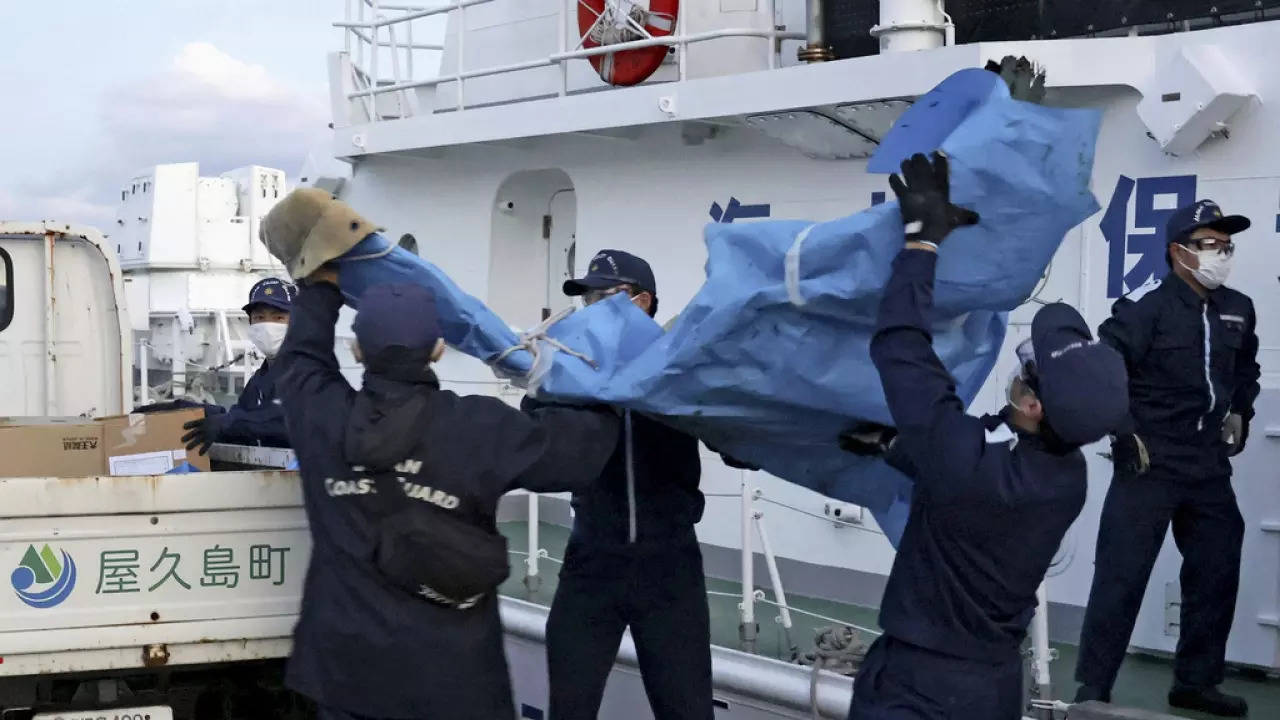[ad_1]
In a heartbreaking turn of events, U.S. and Japanese rescuers located wreckage and identified the remains of five crew members from the Osprey military aircraft that crashed off Japan last week, leaving two members still missing. The U.S. military announced the discovery on Monday, following a joint search operation near the island of Yakushima.
The U.S.Air Force reported a breakthrough as dive teams and surface ships recovered the main fuselage and remains of the aircraft. Of the five crew members found, two have been successfully recovered. The ongoing efforts aim to retrieve the remaining crew members, providing some closure to the families affected by this tragedy.
The Osprey, a versatile military transport aircraft capable of helicopter and fixed-wing operations, crashed during a routine training mission on November 29. The crash prompted a massive joint search operation by U.S. and Japanese teams. Japanese first responders had previously located and recovered one casualty soon after the accident.
Japan’s NHK reported the discovery of what appeared to be the front part of the aircraft, including the cockpit. The Osprey’s crash rekindled safety concerns surrounding the aircraft, which has a history of fatal accidents, including incidents in Australia and Norway.
In response to the crash, Japan suspended all flights of its own Osprey fleet, and Defense Minister Minoru Kihara requested the U.S. military to temporarily halt Osprey flights, except for search-and-rescue operations. However, the Pentagon clarified that only the unit involved in the crash had suspended flying.
The identification of the remains is underway, with priority given to bringing the Airmen home and supporting their grieving families. The incident has reignited discussions about the Japan-U.S. Status of Forces Agreement, which limits Japan’s ability to independently investigate accidents involving U.S. military property.
As the recovery efforts continue, questions linger about the cause of the crash and the safety of Osprey aircraft in the region. The tragedy underscores the challenges of military cooperation and the profound impact on the lives lost in the line of duty.
(with inputs from agencies)
The U.S.Air Force reported a breakthrough as dive teams and surface ships recovered the main fuselage and remains of the aircraft. Of the five crew members found, two have been successfully recovered. The ongoing efforts aim to retrieve the remaining crew members, providing some closure to the families affected by this tragedy.
The Osprey, a versatile military transport aircraft capable of helicopter and fixed-wing operations, crashed during a routine training mission on November 29. The crash prompted a massive joint search operation by U.S. and Japanese teams. Japanese first responders had previously located and recovered one casualty soon after the accident.
Japan’s NHK reported the discovery of what appeared to be the front part of the aircraft, including the cockpit. The Osprey’s crash rekindled safety concerns surrounding the aircraft, which has a history of fatal accidents, including incidents in Australia and Norway.
In response to the crash, Japan suspended all flights of its own Osprey fleet, and Defense Minister Minoru Kihara requested the U.S. military to temporarily halt Osprey flights, except for search-and-rescue operations. However, the Pentagon clarified that only the unit involved in the crash had suspended flying.
The identification of the remains is underway, with priority given to bringing the Airmen home and supporting their grieving families. The incident has reignited discussions about the Japan-U.S. Status of Forces Agreement, which limits Japan’s ability to independently investigate accidents involving U.S. military property.
As the recovery efforts continue, questions linger about the cause of the crash and the safety of Osprey aircraft in the region. The tragedy underscores the challenges of military cooperation and the profound impact on the lives lost in the line of duty.
(with inputs from agencies)
[ad_2]
Source link


